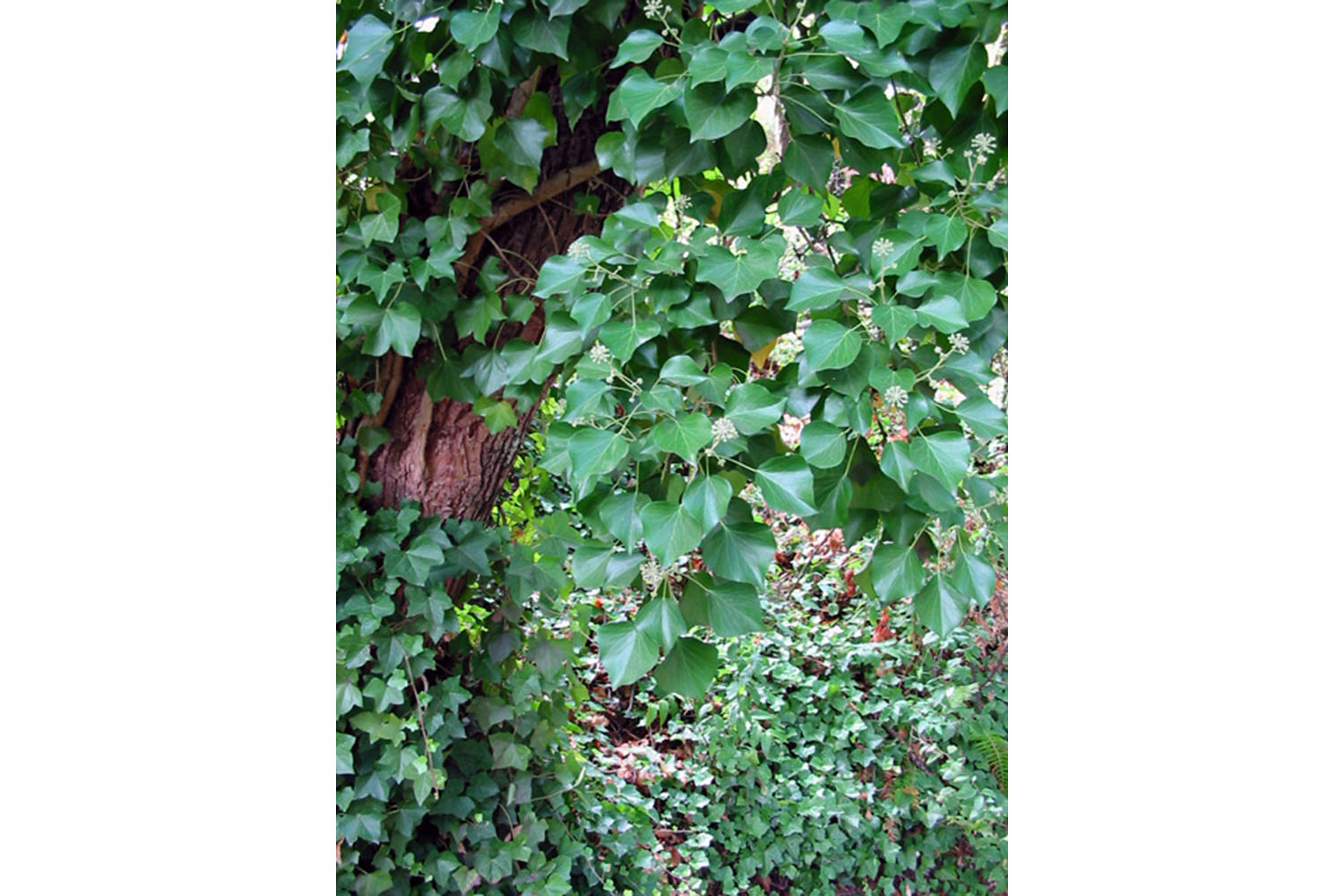Proving English Ivy:
Hedera helix (Araliaceae’”Ginseng family)
by Holly Nielsen
June 2008
Having recently spent several winter months in the dark and dripping Pacific Northwest in Oregon, I couldn’t help but ruminate on the English Ivy seemingly taking over everywhere and that this profuse plant must be intended for some herbal use. It is easy to observe that English Ivy especially loves this climate and wherever it grows it seems to have unlimited potential to use the cold and damp to make its bright, crinkly, dry, evergreen foliage. To me, it seemed to ‘air the damp’’” these thickets of ivy are always layered, woody and DRY where all else is dank and wet. It climbs by tendrils that have the ability to turn into true roots wherever along the stem they encounter deep crevices and sources of nourishment. The vine never flowers until it reaches the apex of its support. At this time, the heart-shaped or palmately lobed leaves become ovate and entire-margined and every terminal shoot produces a cluster of flowers. It can live to be hundreds of years old with a very thick trunk.
It is very interesting to me that this plant is in the Ginseng family’”the Araliaceae. Every member of this family that I know is adaptogenic and tonic. Surely this widespread weed must hold some potential!
In artistic depictions of Bacchus/Dionysos, we often see the notorious Greek god wearing a crown of ivy. This is attributed to ivy’s traditional medicinal use of warding off the negative effects of drunkenness. Some old taverns in England still have this plant depicted above the door as a symbol of the quality of the establishment. It was also worn by Greek statesmen and newlyweds because it stands for fidelity and propriety. (Adapted from A Modern Herbal by Maude Grieve)
I prepared a strong decoction of two cups crushed leaves in liter and a half water. It was mild and pleasant tasting. Energetically, it seemed sour, bitter sweet, slightly acrid and slightly warming/stimulating. It seems this plant has a huge ability to dry dampness. In terms of traditiional Chinese medicine, the sour flavor benefits the Liver, which helps to explain its use to ward off a hangover. The bitter flavor enters the Heart: To me this suggests an explanation for the traditional use of the plant as worn by Greek statesmen and newlyweds with the Heart connection of right-action and right-speech and propriety/fidelity. This, in combination with the herb’s obvious property of drying dampness, seems to possibly indicate its use for symptoms of Phlegm misting the Heart with symptoms of inappropriate words and actions. I think this thesis is worth some experimentation. The sweet flavor is nourishing and benefits the Spleen. The acrid and warming energy would seem to benefit the Spleen and improve digestion by dispersing and breaking up obstructions.The acrid/pungent flavor also enters the Lungs, so it would be worth trying this herb for conditions of Lung Dampness and probably Damp conditions or infections of the skin because of the metal element’s correlation with the skin as a sort of ‘third lung.’
The herb’s energetics seem to be very light and drying. It seems like this herb may be of benefit to damp, excess kapha conditions and perhaps contraindicated for excess vata or yin deficiency, although the sweet flavor may balance the drying energetics. Interesting energetics, and it is in the Ginseng family, so I hope there will be more experimentation regarding its use as an herb. Experiment with caution, or limit to external use, as there are some sources that indicate toxicity of large doses of this herb.

